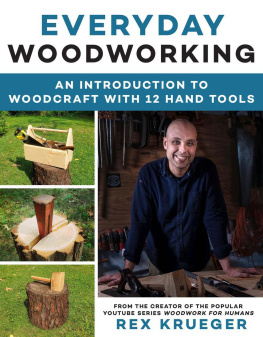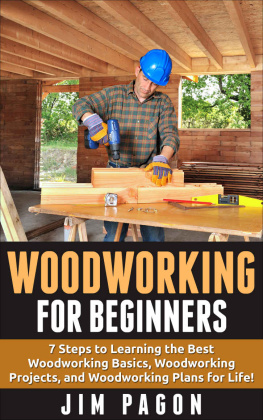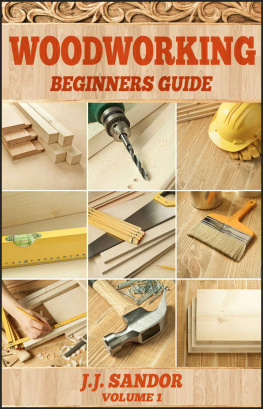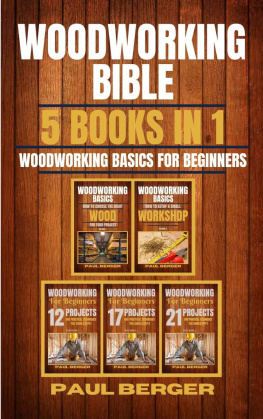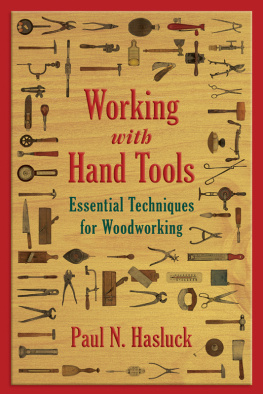Berger Paul - Woodworking Basics: How to choose the right wood for your project (Vol 1)
Here you can read online Berger Paul - Woodworking Basics: How to choose the right wood for your project (Vol 1) full text of the book (entire story) in english for free. Download pdf and epub, get meaning, cover and reviews about this ebook. year: 2020, genre: Children. Description of the work, (preface) as well as reviews are available. Best literature library LitArk.com created for fans of good reading and offers a wide selection of genres:
Romance novel
Science fiction
Adventure
Detective
Science
History
Home and family
Prose
Art
Politics
Computer
Non-fiction
Religion
Business
Children
Humor
Choose a favorite category and find really read worthwhile books. Enjoy immersion in the world of imagination, feel the emotions of the characters or learn something new for yourself, make an fascinating discovery.

- Book:Woodworking Basics: How to choose the right wood for your project (Vol 1)
- Author:
- Genre:
- Year:2020
- Rating:3 / 5
- Favourites:Add to favourites
- Your mark:
- 60
- 1
- 2
- 3
- 4
- 5
Woodworking Basics: How to choose the right wood for your project (Vol 1): summary, description and annotation
We offer to read an annotation, description, summary or preface (depends on what the author of the book "Woodworking Basics: How to choose the right wood for your project (Vol 1)" wrote himself). If you haven't found the necessary information about the book — write in the comments, we will try to find it.
Berger Paul: author's other books
Who wrote Woodworking Basics: How to choose the right wood for your project (Vol 1)? Find out the surname, the name of the author of the book and a list of all author's works by series.
Woodworking Basics: How to choose the right wood for your project (Vol 1) — read online for free the complete book (whole text) full work
Below is the text of the book, divided by pages. System saving the place of the last page read, allows you to conveniently read the book "Woodworking Basics: How to choose the right wood for your project (Vol 1)" online for free, without having to search again every time where you left off. Put a bookmark, and you can go to the page where you finished reading at any time.
Font size:
Interval:
Bookmark:
- Wear appropriate safety gear: safety glasses or a face shield, and hearing protectors or ear plugs.
- If there is no dust collection system, wear a dust mask.
- For exotic woods like ebony, use a respirator; the sawdust may cause an allergic reaction.
- Wear work gloves when handling rough lumber.
- Ensure that workshop lighting and ventilation are adequate and that work surfaces are large and sturdy.
- Read your owner's manual before operating any machine.
- Keep children, onlookers and pets away from the work area.
- Unplug a machine before performing set up or installation operation.
- Keep blades and cutter head knives sharp.
- Turn the machine off if it produces an unfamiliar vibration or noise; have the machine serviced before resuming operations.
- Do not use a machine if any part of it is worn or damaged.
- Roll up long sleeves and eliminate rings and other jewellery that can catch in moving parts.
- Keep your hands well away from a turning blade or cutter head.
- Find a comfortable stance; avoid over-reaching.
- Concentrate on the job; do not rush.
- Never work when you are tired, stressed or have been drinking alcohol or utilizing medications that induce drowsiness.
- Keep your work area clean and tidy; clutter can lead to accidents, and sawdust and wood scraps can be a fire hazard.
- Wear safety goggles, hearing protection, work boots and a hard hat. Ensure your clothes are close-fitting and long hair is tied back.
- Operate a chain saw just outdoors on a dry, clear day.
- Mix fuel and add it to the fuel tank at least 10 feet away from your work area.
- To start up the saw, carry it to the work area and set in on the ground; ensure the chain is not contacting anything.
- Brace the tool with your foot and one hand, and use your other hand to pull the starter cord.
- While operating the saw, hold it firmly with both hands.
- To fell a tree to make your own lumber, begin with an undercut one third the way through the trunk on the side facing the direction in which the tree should fall.
- Cut the wedge angling up from the base of the tree.
- Known as the Humbolt undercut, this technique saves lumber from the most valuable part of a tree-the lower part of the trunk-a chunk of which will be lost with the traditional technique of undercutting.
- Then make a back cut a couple of inches above the undercut from the opposite side to fell the tree.
- The back cut should stop an inch or two from the undercut to leave a hinge that will control the direction of the fall and help prevent blade kickback.
Font size:
Interval:
Bookmark:
Similar books «Woodworking Basics: How to choose the right wood for your project (Vol 1)»
Look at similar books to Woodworking Basics: How to choose the right wood for your project (Vol 1). We have selected literature similar in name and meaning in the hope of providing readers with more options to find new, interesting, not yet read works.
Discussion, reviews of the book Woodworking Basics: How to choose the right wood for your project (Vol 1) and just readers' own opinions. Leave your comments, write what you think about the work, its meaning or the main characters. Specify what exactly you liked and what you didn't like, and why you think so.

